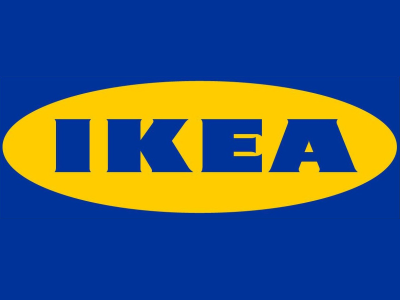IKEA UK Now Selling Solar Panels for Homes
Fingers crossed for sunshine.
IKEA, supplier of flat-pack furniture and boxed frustration is broadening its horizons. The company this week started selling residential solar panels in its UK retail stores. According to BusinessInsider, IKEA's store in Southampton is the first to sell the solar panels. The rest of the stores will follow suit over the next few months.
Before you get excited, you'll want to consider the cost behind running your home on solar power. BI reports that just one of IKEA's solar panels will cost over five and a half grand, and that's in GBP. The exact price is £5,700. However, for that price, you'll get the 3.36 kilowatt system, an in-store consultation and design service, installation and maintenance, as well as an energy monitoring service. What's more, the UK government offers incentives for those utilizing solar power, including finance plans that allow you to buy the system up front and pay it off in installments.
IKEA does plan to sell solar panels in other countries, but the company hasn't specified as to when that might be.
Follow Jane McEntegart @JaneMcEntegart. Follow us @tomshardware, on Facebook and on Google+.
Get Tom's Hardware's best news and in-depth reviews, straight to your inbox.

Jane McEntegart is a writer, editor, and marketing communications professional with 17 years of experience in the technology industry. She has written about a wide range of technology topics, including smartphones, tablets, and game consoles. Her articles have been published in Tom's Guide, Tom's Hardware, MobileSyrup, and Edge Up.
-
virtualban In a few years, these jewels will have paid for themselves.Reply
But look at a more positive example... imagine a zombie apocalypse. At least, a few hours a day you can still charge your Android even if everything else fails (assuming iPeople will not be among the surviving crowd). -
outlw6669 I am not sure as to price comparisons, but 5700 GBP for a complete system that should be easily able to power an average home (on a sunny day) does not seem like that bad of a deal.Reply -
boju I seen a documentary a couple years ago, someone might recall, research using sort of solar film that could be used as a layer on an entire roof surface. Was quite interesting, don't remember how effective it was or even heard more of it since.Reply
It was awhile a go seeing it and one thing that stuck in my mind was their comment about how significantly cheaper it was a meter compared to solar panels. -
house70 Reply
Are you kidding? The iZombies can already be seen lining up at Apple stores. LOL11639307 said:In a few years, these jewels will have paid for themselves.
But look at a more positive example... imagine a zombie apocalypse. At least, a few hours a day you can still charge your Android even if everything else fails (assuming iPeople will not be among the surviving crowd).
If IKEA makes the while process headache-free, kudos to them. I think a tiered-style service would be better (full service for customers that can afford full price, skip the energy monitoring service for the next tier down, and so on).
-
CaedenV Average electric use in the US (according to eia's website) is 940kWh/mo. If you live in a zone 5 area like I do then that means you need a ~9kWh system to cover all electrical needs. At ~$9,000 USD for a 3.3kWh system it would mean roughly $25,000 for a full grid-tie system. Not a terrible price to be sure, and hopefully you could get a better deal on a larger system as there would be less redundancy of parts and labor that are built into that price, but still a little out of reach for those of us who would get very little in the way of tax breaks.Reply
The other issue is that the 940kWh/mo is based upon actuial usage, not total energy needs. In other words, most people out my way run their heater, hot water heater, and stoves on natural gas rather than electricity... which means that you are still forking over a bit of cash to Duke or GE during those winter months unless you have the money to convert those appliances on top of the solar costs. I would love to go solar eventually, but it is going to be a loooong time before it will a financially viable option. -
Au_equus the solar panels are the result of an agreement between ikea and hanergy (of china). they use cadmium telluride (CdTe) thin film technology.Reply -
w8gaming Reply11639997 said:Average electric use in the US (according to eia's website) is 940kWh/mo. If you live in a zone 5 area like I do then that means you need a ~9kWh system to cover all electrical needs. At ~$9,000 USD for a 3.3kWh system it would mean roughly $25,000 for a full grid-tie system. Not a terrible price to be sure, and hopefully you could get a better deal on a larger system as there would be less redundancy of parts and labor that are built into that price, but still a little out of reach for those of us who would get very little in the way of tax breaks.
The other issue is that the 940kWh/mo is based upon actuial usage, not total energy needs. In other words, most people out my way run their heater, hot water heater, and stoves on natural gas rather than electricity... which means that you are still forking over a bit of cash to Duke or GE during those winter months unless you have the money to convert those appliances on top of the solar costs. I would love to go solar eventually, but it is going to be a loooong time before it will a financially viable option.
Yes, solar is still expensive and unless one uses very little electricity compared to most modern home needs, the cost breakeven point is usually more than 10 years. But as oil prices will continue to go up and as a result drives up electricity bill, solar might one day ends up becoming the cheaper option.
-
zakaron This could be particularly useful if you own a plug-in electric car. It doesn't say what voltage the 3.3KWh is delivered at (assuming 230V for UK market), but based on gasoline prices in the US, it could pay for itself in about 50,700 miles of driving (I assumed $3.55/gal gas, 20mpg average). If you powered other circuits from this to the house, like A/C, it could pay for itself even quicker.Reply -
tniedoba Just curious how much maintenance would be expected on such installations over their lifetime, and what is the life expectancy since the panels have to endure all types of weather. I would think the costs will be higher than initially expected, kinda like a new car, maintenance is inevitable. It must use batteries for storage too, and like most batteries I've had to deal with, they degrade faster than I'd like them to and are not cheap to replace... What if after a few years, the whole thing needs to be replaced again... hope the warranties cover a good length of time and are not purely for defects.Reply
